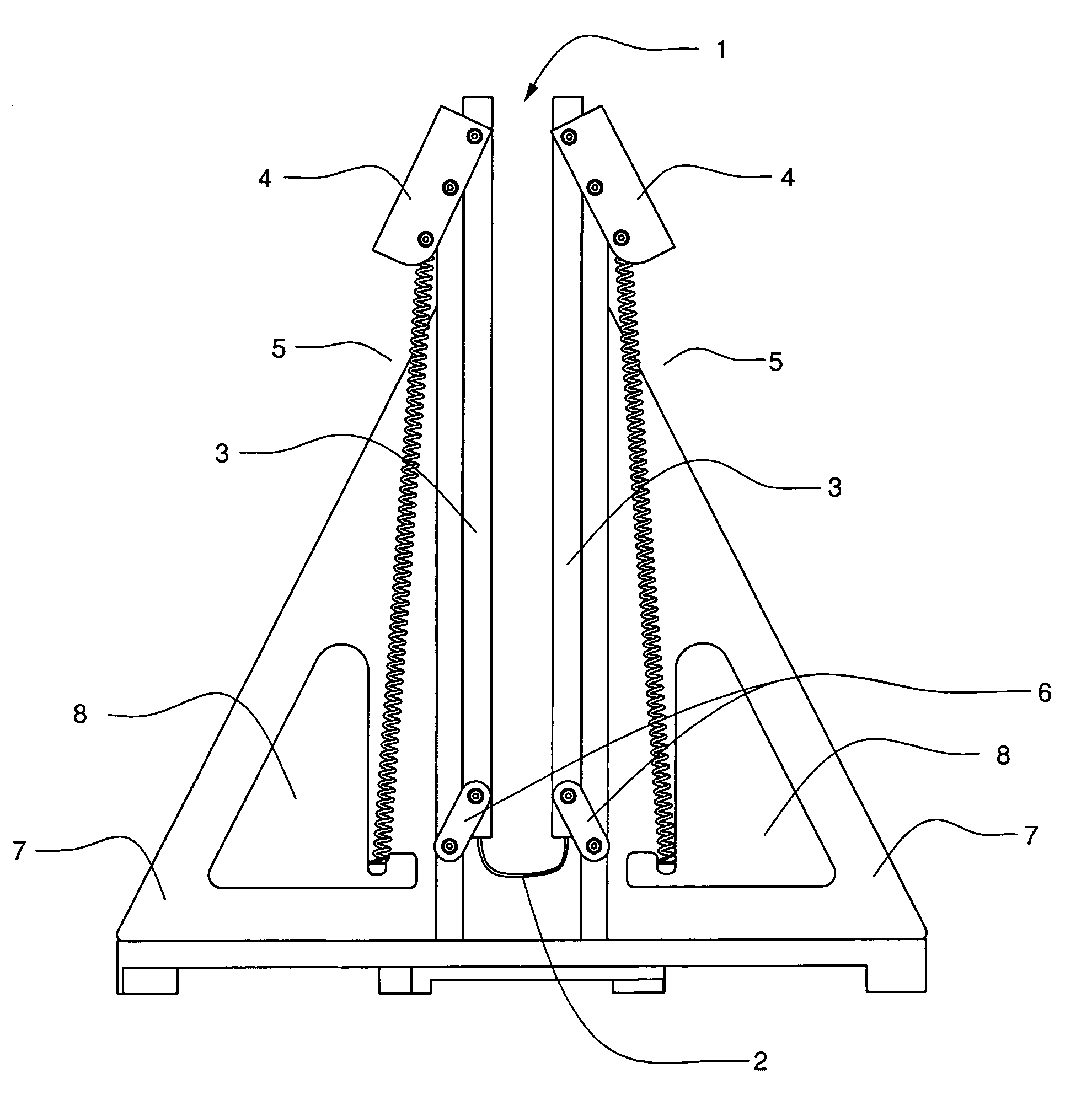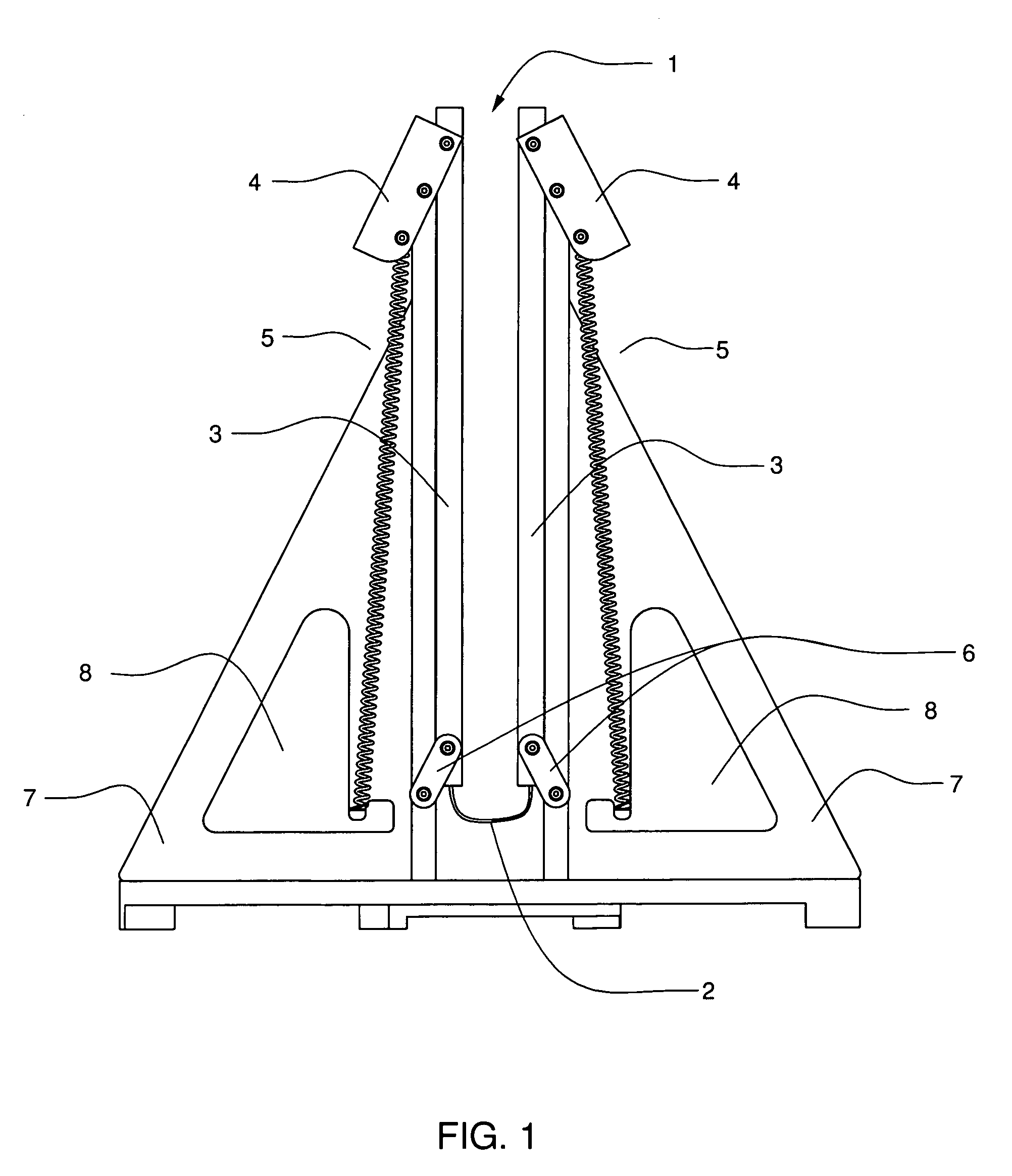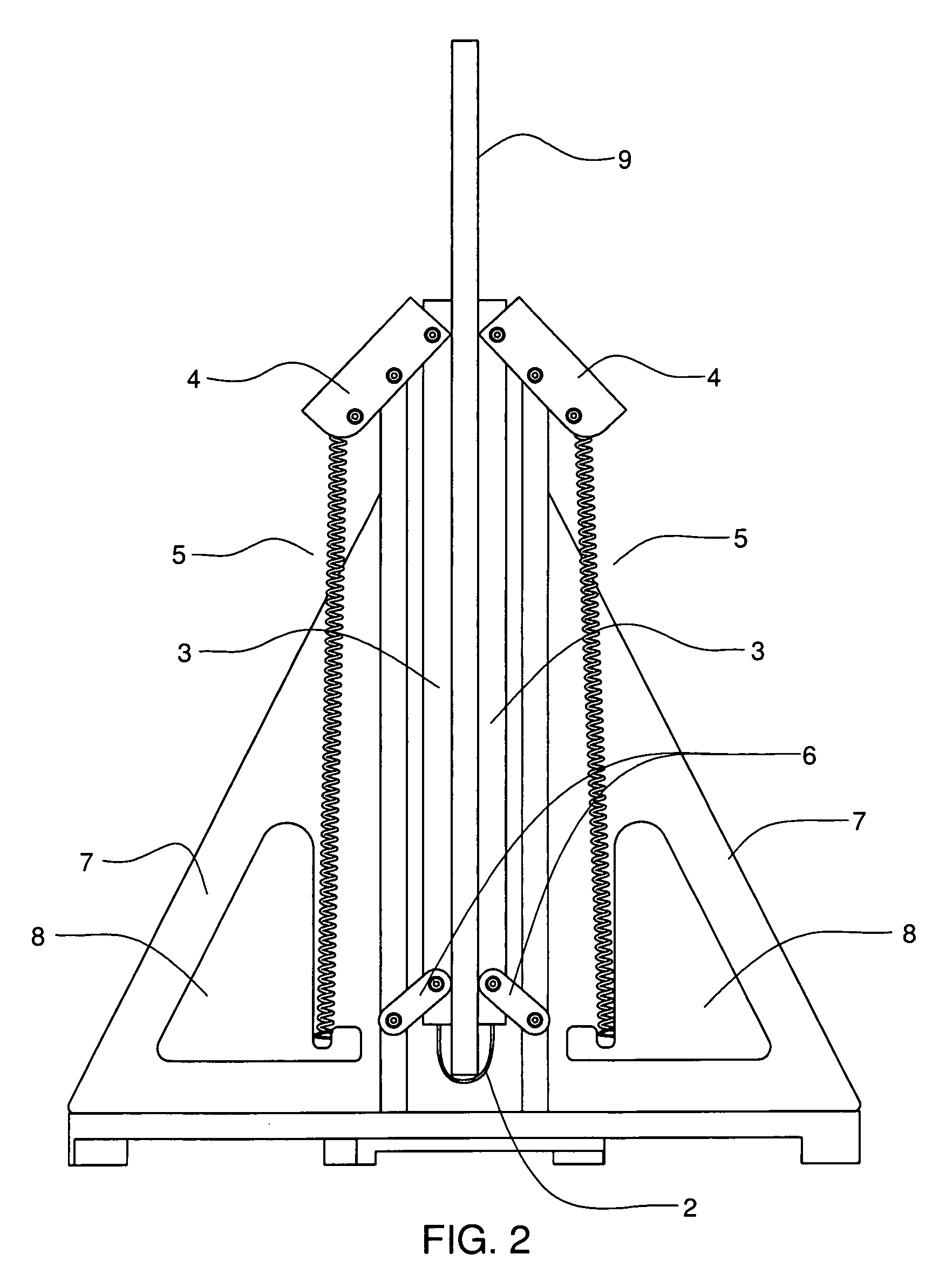Automatic workpiece clamp and support
- Summary
- Abstract
- Description
- Claims
- Application Information
AI Technical Summary
Benefits of technology
Problems solved by technology
Method used
Image
Examples
Embodiment Construction
[0014]Before engagement with a workpiece, as shown in FIG. 1, the clamping jaws 3 are pressed against the frame 7 by springs or other elastic members 5 which are connected to the clamping jaws 3 via rotating levers 4 that are secured to the frame 7. The point at which the levers 4 join the frame 7 defines the pivot point for the levers. Before engagement, there is a gap 1 between the clamping jaws 3 into which a door, panel, window, plasterboard, or other workpiece can be inserted. The overall shape of the frame 7 is generally triangular and gap 1 essentially creates two symmetrical triangles on either side of the gap. Assuming the invention is composed of a sufficiently sturdy material such as wood, the centers of these two symmetrical triangles may be cut out 8 while preserving physical integrity. These cut outs 8 serve not only to lessen the overall weight of the invention, but also provide a simple and effective means for gripping it.
[0015]The design of the clamping jaws is crit...
PUM
 Login to View More
Login to View More Abstract
Description
Claims
Application Information
 Login to View More
Login to View More - R&D
- Intellectual Property
- Life Sciences
- Materials
- Tech Scout
- Unparalleled Data Quality
- Higher Quality Content
- 60% Fewer Hallucinations
Browse by: Latest US Patents, China's latest patents, Technical Efficacy Thesaurus, Application Domain, Technology Topic, Popular Technical Reports.
© 2025 PatSnap. All rights reserved.Legal|Privacy policy|Modern Slavery Act Transparency Statement|Sitemap|About US| Contact US: help@patsnap.com



